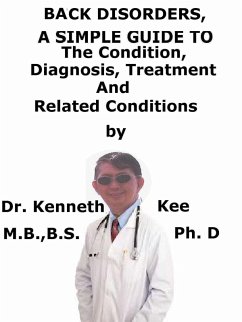Back pain is the pain that affects any part of the spine, the most frequent area of the spine to be affected being the lumbar region.
Almost everyone will have back pain at some time in their lives.
This pain can range from mild to severe.
It can last a short time or may be long-lasting.
When it happens, back pain can make many everyday activities hard to do.
The spine comprises small bones, called vertebrae, which are stacked on top of one another.
Muscles, ligaments, nerves, and intervertebral disks are extra parts of the spine.
Back pain differs from one person to the next.
The pain can have a gradual start or come on suddenly.
The pain may be intermittent or constant.
In most cases, back pain recovers on its own within a few weeks.
There are many causes of back pain.
It occasionally happens after a specific movement such as lifting or bending.
Age also plays a part in many back disorders.
Aging produces degenerative changes in the spine.
These changes can begin in the 30s or even younger and can make people prone to back pain, particularly if they overdo the activities.
These aging alterations do not keep most people from leading productive, and normally, pain-free lives.
Over-activity
One of the more frequent causes of back pain is muscle soreness from over-activity.
Muscles and ligament fibers can be overstrained or injured.
People are all familiar with this "stiffness" and soreness in the back and other areas of the body that normally goes away within a few days.
Disk Injury
Some people have back pain that does not go away within days.
This may indicate that there is an injury to a disk.
Disk tear
Small tears to the outer part of the disk (annulus) on occasions happen with aging.
Some people with disk tears have no pain at all.
Others can have pain that persists for weeks, months, or even longer.
Herniated disk
A disk herniates when its jelly-like center (nucleus) protrudes against its outer ring (annulus).
If the disk is very worn or injured, the nucleus may push all the way through.
When the herniated disk protrudes out toward the spinal canal, it places pressure on the sensitive spinal nerves, producing pain.
Since a herniated disk in the low back often places pressure on the nerve root leading to the leg and foot, pain often happens in the buttock and down the leg.
Spinal Stenosis
Spinal stenosis happens when the space around the spinal cord becomes narrow and places pressure on the cord and spinal nerves.
When intervertebral disks crumble and osteoarthritis forms, the body may react by growing new bone in the facet joints to help support the vertebrae.
Over time, this bone overgrowth (termed spurs) can cause a narrowing of the spinal canal.
Osteoarthritis can also induce the ligaments that join vertebrae to thicken, which can cause narrowing of the spinal canal.
Disk degeneration
With age, intervertebral disks start to tear and wear away and then shrink.
In some cases, they may crumple totally and force the facet joints in the vertebrae to rub against one another.
Pain and stiffness happen.
Diagnosis
Disorders such as a herniated disk or an infection are more evident in an MRI scan.
Treatment
Generally, treatment for back pain falls into one of 3 categories: Medications, physical medicine, and surgery.
Several medicines may be given to help alleviate the pain
Physical therapy can involve passive methods such as heat, ice, massage, ultrasound, and electrical stimulation
Braces such as corsets are often applied
Surgery for back pain should only be indicated only if non surgery methods fail.
TABLE OF CONTENT
Introduction
Chapter 1 Back Disorders
Chapter 2 Coccygeal Dislocation
Chapter 3 Spinal Stenosis...
Dieser Download kann aus rechtlichen Gründen nur mit Rechnungsadresse in A, B, CY, CZ, D, DK, EW, E, FIN, F, GR, H, IRL, I, LT, L, LR, M, NL, PL, P, R, S, SLO, SK ausgeliefert werden.









